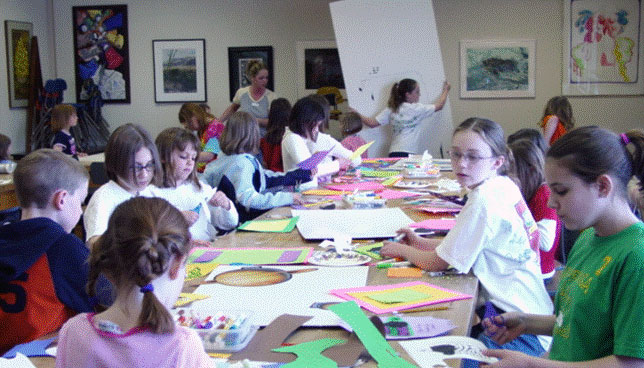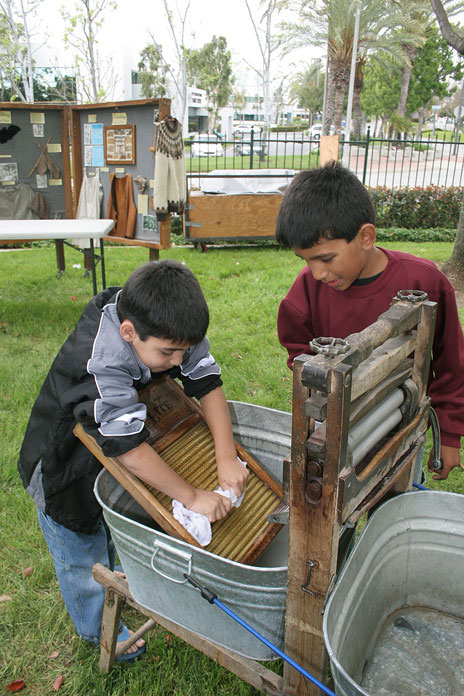A biweekly newsletter with public space news, resources, and opportunities.
A curated dispatch on all things public markets plus the latest announcements from the Market Cities Program.
By Cynthia Nikitin and Josh Jackson
Libraries are perhaps our most enduring public institutions--priceless repositories of history, language, and culture. The dawn of the "information superhighway" threatened to make them less relevant, even obsolete. Yet now, these institutions are as prominent as ever, with a wave of innovation as the next generation of libraries extend their mission well beyond the storage of knowledge.

At their best, these new libraries serve as centers of discovery and communication--places where people gather and where information comes alive through teaching and personal interaction. Indeed, to distinguish themselves in a world where Google is well on its way to digitally scanning most of the books ever written, libraries are learning to take advantage of the simple fact that they are centrally located in almost every community. In other words, libraries now see success being linked to their role as public places and destinations.
While many cities and towns now recognize the importance of re-positioning libraries as destinations, this awareness doesn't always translate into a well-rounded success. The most high-profile new libraries rely on stylized designs to create buzz, feeding a false perception that destination libraries are all about attention-grabbing looks. But when the tour bus crowds stop coming, these libraries will sink or swim based on how well they serve the needs of their respective communities--whether they are truly great places, not just eye-catching buildings.
"Librarians have to think about our spaces differently. Before we managed book collections, and today we're doing much more management of community spaces."
There are plenty of unsung libraries that embody a very different and more compelling vision of what it means to be a public place. They may fly under the radar as architectural landmarks, but they still garner respect, praise and even adoration on account of their innovative management and programming--as well as design that supports a multitude of different uses. They are taking on a larger civic role--balancing their traditional needs and operations with outreach to the wider community--thereby contributing to the creation of a physical commons that benefits the public as a whole. If the old model of the library was the inward-focused community "reading room," the new one is more like a community "front porch."
Just as libraries are adapting to new circumstances, so too are librarians. Eric Stackhouse, chief librarian at the Pictou-Antigonish Regional Library in New Glasgow, Nova Scotia, notes that "librarians have to think about our spaces differently. Before we managed book collections, and today we're doing much more management of community spaces. That's where our role is heading--towards more community development skills."
Following a PPS training course in New Glasgow initiated by Stackhouse and fellow librarian Linda Arsenault, Nova Scotia libraries are now incorporating Placemaking language into their standards for facility construction and services. Stackhouse says the new ideas have put librarians at the center of an ongoing dialogue that has grown to include planners, government officials, and other community leaders. "The training raised the whole level of discussion," he adds. "People really want these sorts of places."
Here are three more examples of how this groundbreaking "inside/outside" approach is redefining the destination library. These libraries represent a broad spectrum of settings, from downtown districts to suburban towns to rural counties. They range from large to small, old to new. What they share, however, is a commitment to forming partnerships and creating innovative programs that bring new people into the library and extend the library's role into the community. Each brings to light a truth that all libraries should take to heart: In order to draw people in, first you have to reach out.
In downtown Charlotte, North Carolina, the ImaginOn children's library and theater illustrates the critical role that civic partnerships can play in expanding the impact of a community institution. The ImaginOn emerged from the cooperative efforts of the Children's Theater of Charlotte and the Public Library of Charlotte and Mecklenburg County. Each organization has a presence in the building, where they collaboratively produce a tightly integrated mix of programs and events. By sharing a building and a mission -- "bringing stories to life" -- the library and the theater complement each other perfectly, creating a critical mass of activity.
"Some people come to the library and find the theater," says Beth Murray, a librarian at the ImaginOn, "Some people come to the theater and find the library."

These overlapping uses set the stage for events you might not necessarily associate with libraries. In true front porch fashion, the ImaginOn produces events that spill into the downtown area. "Wordplay Saturday," for instance, is a yearly event that fills the streets with people. With performances inside the library and activities outside, the festival transforms Charlotte into a giant party for kids. The event is one way the ImaginOn--together with the Afro-American Cultural Center, the Levine Museum of the New South, and several other neighboring institutions--has been instrumental to the emergence of a lively and walkable cultural center in downtown Charlotte.
Murray is quick to credit the people she serves as the inspiration behind the library's success as a destination: "The public teaches us," she explains, "The public helps us rise to the occasion."
Frankfort, Indiana is a town of 16,000 located in between Chicago and Indianapolis. The Community Public Library has established itself as the focal point of local life by offering a broad range of activities emphasizing art, performance, and creativity.
Library director Bill Caddell cites the life and work of Kentucky artist Harlan Hubbard as the inspiration for the library's mission. Hubbard eschewed consumer culture and lived his life simply, in a house by the banks of the Ohio River, aspiring to "make life a work of art." Caddell interpreted this goal broadly and enthusiastically for the library. "We wanted to make the entire library experience educational," he explains.
He began by honoring requests from local residents for lessons in everything from bread baking to belly dancing. Before long, the library had to expand just to keep up. As Caddell recalls: "We had so many classes that we ran out of room."

So, when Harlan Hubbard died in 1988, Caddell memorialized him by establishing the Hubbard School of Living. The new library wing includes galleries, studios, and a 200-seat theater. Caddell's partnerships with the local art league, quilt guild, and children's theater ensured that the expanded facilities would be fully utilized.
Today, the Community Public Library and its Hubbard School of Living are proof that inside/outside libraries are just as vital in small towns as in big cities. Stroll by during the afternoon, and you might see volunteer gardeners beautifying the library's landscape, while piano melodies float by from the free lesson taking place inside. It is indeed a living work of art.
(For more information on Harlan Hubbard, see Wendell Berry's superb biography Harlan Hubbard: Life and Work, Pantheon, 1990).
The mission of the Santa Fe Springs Public Library is to expand literacy and teach language skills to a diverse population in the suburbs of Los Angeles. It accomplishes this goal with a variety of innovative programs and effective partnerships that extends well beyond its stacks and reading areas.
The library makes great use of its prominent location next door to City Hall and the Santa Fe Springs Recreation Center, offering a varied schedule of recurring activities and larger, seasonal events, all in the civic heart of town. Among the repeat offerings are "First Fridays", which thrill audiences every month with dancing, storytelling, and other entertainment--often with a social or historical emphasis.
The Santa Fe Springs Library in suburban L.A. turns into a performing arts space the first Friday of every month. In partnership with the neighboring Heritage Park and local museum staff, the library also coordinates and hosts several big civic events. These range from Las Posadas, a traditional Latin American procession that takes place every year before Christmas, to "Children's Day," when kids try their hand at turn-of-the-20th-century tools, clothes, and customs. These activities, which are programmed throughout the year, are one reason why the library is central to community life in Santa Fe Springs.

Another reason for the library's success is the extensive outreach to fellow institutions. Librarian and activities director Joyce Ryan notes that the library works with public schools to "transform the library into a social and historical context" for books that children are reading in school, through a program called "Bringing Literature to Life." Each year this event brings an average of 400 high school juniors into the library. Different clubs and departments at the local high school are involved in making decorations and performing skits, dances, and choral arrangements. The Huckleberry Finn-themed event this year marked the fourth time the event has been held. Previous years' themes have featured Romeo and Juliet, The Great Gatsby, and Arthur Miller's The Crucible. Its careful attention to detail and well-executed partnerships set the Santa Fe Springs Library apart.
The rich text element allows you to create and format headings, paragraphs, blockquotes, images, and video all in one place instead of having to add and format them individually. Just double-click and easily create content.
The rich text element allows you to create and format headings, paragraphs, blockquotes, images, and video all in one place instead of having to add and format them individually. Just double-click and easily create content.
Body Text Body Link
The rich text element allows you to create and format headings, paragraphs, blockquotes, images, and video all in one place instead of having to add and format them individually. Just double-click and easily create content.
Here is some highlighted text from the article.




Headings, paragraphs, blockquotes, figures, images, and figure captions can all be styled after a class is added to the rich text element using the "When inside of" nested selector system.
Headings, paragraphs, blockquotes, figures, images, and figure captions can all be styled after a class is added to the rich text element using the "When inside of" nested selector system.
Headings, paragraphs, blockquotes, figures, images, and figure captions can all be styled after a class is added to the rich text element using the "When inside of" nested selector system.